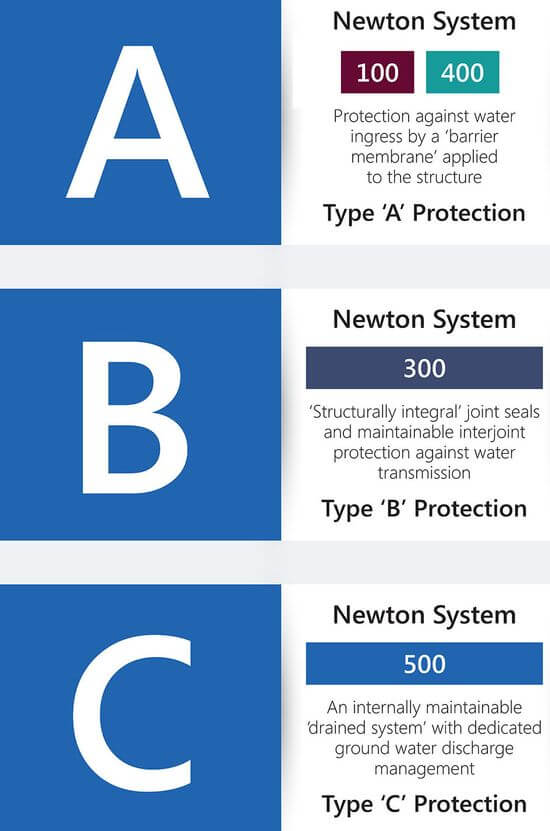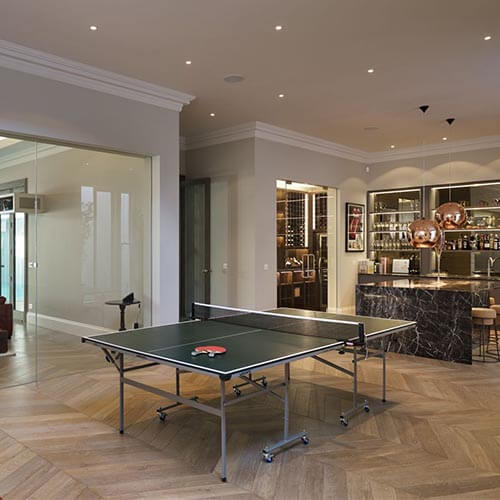01732 496 523
Implications of British Standard 8102 for Waterproofing A New-Build Basement
In deciding the method for waterproofing a new-build basement it is advisable to follow the recommendations within the BS 8102:2022 ‘Code of Practice for Protection of Below Ground Structures Against Water Ingress’. The standard advises on the types of waterproofing available. It also confirms the performance grade to be achieved:

Types of Waterproofing:
-
- Type A (Barrier) protection – A barrier to water ingress is applied to the inner or outer surface of the structure
- Type B (Structurally Integral) protection – The structure is formed as a watertight construction and requires no additional protection
- Type C (Drained) protection – Water entering the structure is received by planned cavities or voids and safely removed
Grades of Waterproofing Protection:
- Grade 1a – Seepage and damp areas from internal and external sources are tolerable, where this does not impact on the proposed use of below ground structure. Internal drainage might be necessary to deal with seepage
- Grade 1b – No seepage. Damp areas from internal and external sources are tolerable.
- Grade 2 – No seepage is acceptable. Damp areas as a result of internal air moisture/condensation are tolerable; measures might be required to manage water vapour/condensation.
- Grade 3 – No water ingress or damp areas is acceptable. Ventilation, dehumidification or air conditioning necessary; appropriate to the intended use.
Seepage (sometimes referred to as weeping) is defined as the slow transmission of water through discrete pathways of a structure. A damp area is defined as slightly wet but with no seepage.
The agreed grade should meet with client’s expectations for the intended use of the below ground space. Reducing the grade could increase the risk of not meeting the expectations. This affects the client for the intended use of the below ground space.
The different grades of waterproofing: What is a dry basement?
Recommendations From BS 8102:2022
Site Investigation Regarding Geology, Hydrogeology and Topography
Where a comprehensive site investigation is not possible, or the results are inconclusive, the designer should design both the structure and the waterproofing of the structure to be able to deal with a full head of hydrostatic water pressure – or in layman’s terms, full saturation of the ground.
It is also important to consider that ground investigations are a snapshot in time of the ground water levels. Many factors can influence these levels. One such example is a perched water table that only occurs after heavy and prolonged rainfall. Another is during a water-pipe burst. It is therefore always safer to assume that a full head of water pressure will come to bear at some point. At Newton, all of our waterproofing specifications are designed to deal with fully saturated ground. They handle full height water levels.
Inclusion of a Waterproofing Specialist as Part of the Design Team
A waterproofing specialist should be appointed as part of the design team. This ensures that an integrated waterproofing solution is created. The waterproofing specialist should:
- be suitably qualified and experienced commensurate with the type and size of the proposed project;
- be capable of devising solutions that accommodate the various project constraints and needs with an understanding of construction forms and sequencing; and
- provide the design team with information and guidance that assists with and influences the design, installation and future maintenance of the waterproofed structure.
All design decisions made by others that might have an impact on the waterproofing design should be brought to the attention of the waterproofing specialist/designer or installing contractors. Final decisions and any recommendations should be approved by the specialist waterproofing designer/contractor.
Basement Waterproofing With Combined Waterproofing Systems
The use of combined protection in various forms (including Types A & B, A & C, B & C, A & B & C, or A & A) should be determined where in a single system:
- the assessed risks are deemed to be high; or
- the consequences of failure to achieve the required internal environment are deemed too high.
Where a combination is being considered, systems should have different performance characteristics to mitigate the risk of failure due to a common cause.
The decision to use a combined approach of two or more types of waterproofing will always be based upon a risk vs cost calculation. Furthermore, other factors will often dictate the use of a second or third type of waterproofing. Examples include ground gasses or aggressive agents found within the ground water.
“I use Newton Waterproofing Systems because of the friendly and efficient service that we get – nothing is ever too much trouble. The products are excellent and I like being part of the research and development of their products to the ongoing benefit of the waterproofing industry. In addition I like the fact that my company is associated with the market leaders in structural waterproofing.” Ian MacLennan, MacLennanUK, Newton Specialist Basement Contractor
Newton Combination Waterproofing Solutions
When designing the waterproofing for other structural elements that require protection, such as podium decks and pile caps, in all such situations these building elements can be successfully waterproofed using Newton products. In many cases, this is achieved using a combination of systems in order to provide the optimum level of protection. This is true for new-build basements.
Newton Specialist Basement Waterproofing Contractors
Whether waterproofing a new-build basement or an existing structure, we will always recommend that the preferred waterproofing system be installed by one of our registered contractors. As a result, the correct detailing, sequencing and installation methodology is followed from the start.
When involved in the design, they are able to offer insured guarantees for both the installation and the design of the waterproofing system. Additionally, with most of our contractors having suitable Professional Indemnity, this allows you to delegate the full design liability for the waterproofing aspect of the project to them. Newton Specialist Basement Contractors are able to fulfil the role of waterproofing specialist as suggested by BS 8102:2022. Consequently, we see that waterproofing contracts run more smoothly and have fewer issues. This occurs particularly where one of our NSBC contractors are also the waterproofing design specialist on the design team.
Speak to our friendly, expert team
Our staff are able to provide guidance for projects of all sizes, whether you require some general advice about damp or waterproofing, or support with technical drawings and specifications.




















